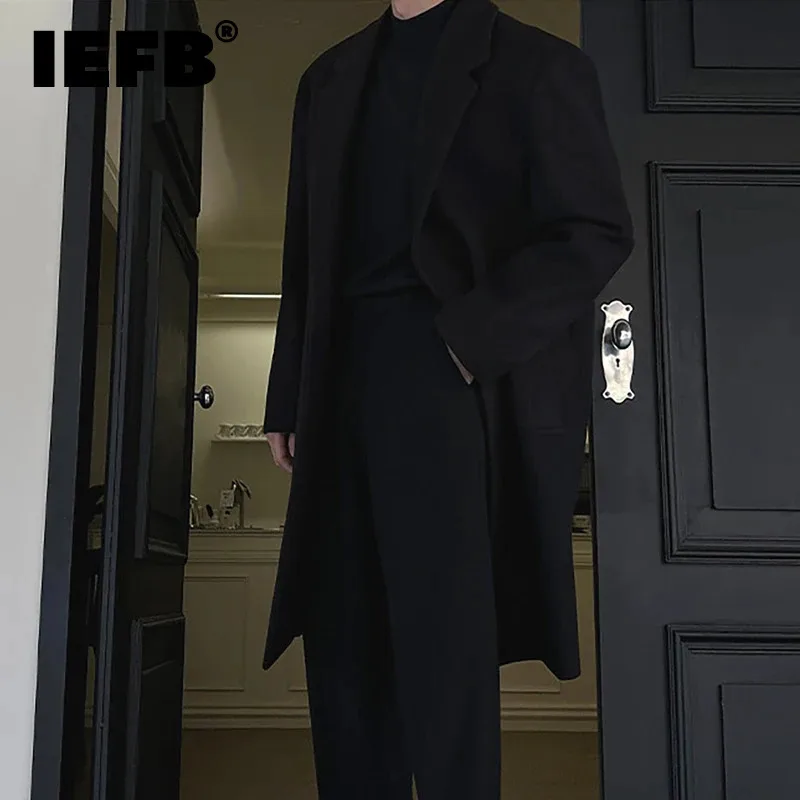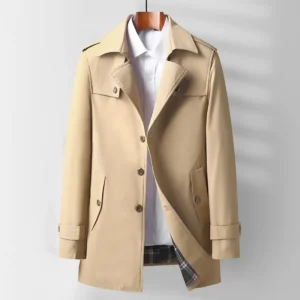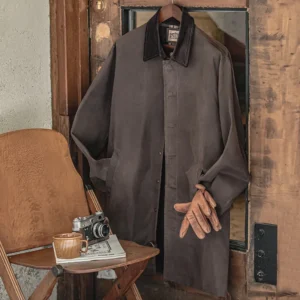Introduction: Why Coat Length Matters for Your Overall Look
Selecting the right coat is about more than just warmth and style—it’s about proportion. The length of your coat can dramatically transform your silhouette, either enhancing your natural build or working against it. When a coat length complements your height, it creates visual harmony that makes your entire outfit look more polished and intentional.
Many men overlook this crucial element when shopping for outerwear, resulting in common mistakes:
- Too long a coat can overwhelm shorter frames, making them appear even shorter
- Too short a coat on tall men can create awkward proportions and appear ill-fitting
- Improper length can disrupt your body’s natural balance, regardless of your height
The right coat length does more than just flatter—it creates presence. At Metro Cloak, we understand that proper proportions are the foundation of exceptional men’s outerwear. Choosing the right coat length involves understanding both general principles and your specific body proportions.
This guide will help you navigate coat length options with confidence, ensuring your next outerwear purchase enhances your height rather than fighting against it.
Understanding the Basics of Coat Length Measurement
Before diving into height-specific recommendations, it’s important to understand how coat length is measured and the standard terminology used in men’s outerwear.
Coat length is traditionally measured from the base of the collar (where it meets the shoulder seam) down to the bottom hem. This measurement helps categorize coats into several standard lengths:
- Cropped: Ends at or above the waist (typically 20-24 inches or 51-61 cm)
- Waist-length: Sits at the natural waistline (around 24-26 inches or 61-66 cm)
- Hip-length: Extends to the hip area (approximately 28-30 inches or 71-76 cm)
- Mid-thigh: Reaches to mid-thigh (about 32-34 inches or 81-86 cm)
- Knee-length: Extends to the knee (typically 36-40 inches or 91-102 cm)
- Below-knee: Falls below the knee but above the ankle
- Full-length/Maxi: Extends to mid-calf or longer
Different coat styles naturally have traditional lengths associated with them. For instance, peacoats typically hit at hip length, while classic overcoats often extend to the knee or just below.
When considering coat length, remember the “rule of thirds” in men’s fashion—a principle suggesting that dividing the body into thirds often creates the most pleasing visual proportion. This might mean selecting a coat length that helps create this balanced division between your upper body, coat, and lower body.
Understanding these men’s coat length guidelines provides the foundation for making smart choices based on your specific height and build.
Coat Lengths for Shorter Men (Under 5‘8” or 173 cm)
For men of shorter stature, coat length plays a crucial role in creating a balanced, proportional appearance. The primary goal is to create a longer leg line while avoiding overwhelming your frame with excess fabric.
Best Coat Lengths for Shorter Men:
- Hip to mid-thigh length: This sweet spot creates visual balance without overwhelming your frame. This range (about 28-34 inches or 71-86 cm) typically offers the most flattering proportion.
- Shorter peacoats: Traditional peacoats that end at the hip provide structure while maintaining proportion.
- Tailored topcoats: Look for styles that end just above the knee rather than below it, keeping the coat in proper proportion to your height.
Lengths to Approach with Caution:
- Full-length overcoats can visually shorten your frame by creating too much vertical fabric
- Ultra-cropped styles sometimes create odd proportions by emphasizing leg length at the expense of overall balance
To create a taller appearance regardless of coat length, pay attention to details like vertical seaming, streamlined designs, and monochromatic color schemes between your coat and pants. This creates an unbroken vertical line that elongates your silhouette.
Best coat lengths for shorter men should highlight your proportions while ensuring functionality and comfort. Well-fitted shoulders and sleeves are especially important, as excess fabric in these areas can make the entire coat appear too large.
The wool car coat represents an excellent option for shorter men, offering a classic hip to mid-thigh length that flatters without overwhelming.
Ideal Coat Styles for Shorter Men
Beyond just length considerations, certain coat styles naturally complement shorter frames better than others. Focus on these elements when shopping:
- Streamlined silhouettes: Avoid bulky, oversized styles that add visual weight
- Structured shoulders: Well-defined (but not overly padded) shoulders create clean lines
- Vertical details: Look for styles with vertical quilting, seaming, or button placements
- Single-breasted closures: These create a cleaner, less busy front than double-breasted styles
- Proper sleeve proportions: Sleeves should end at your wrist bone with just enough room to show 1/4 to 1/2 inch of shirt cuff
For shorter men, the fit through the shoulders and chest is particularly important. A coat that’s too roomy through the upper body will appear oversized regardless of its length. Consider minor tailoring adjustments for off-the-rack purchases—hemming a sleeve or taking in side seams can dramatically improve the overall appearance.

Our collection of car coats offers excellent options for shorter men, with proportions that naturally complement a more compact frame while providing versatile style for both casual and dressier occasions.
Coat Lengths for Average-Height Men (5‘8”-6‘0” or 173-183 cm)
Average-height men enjoy the most versatility when it comes to coat length options. Your proportions can typically accommodate a wide range of styles, though certain lengths will better complement specific looks and occasions.
Recommended Coat Lengths:
- Mid-thigh to knee-length: This range (32-40 inches or 81-102 cm) works exceptionally well for business and formal settings. It provides excellent coverage without overwhelming your frame.
- Hip to mid-thigh: Ideal for casual styles and everyday wear, offering practicality and clean lines.
- Below-knee options: These dramatic lengths can work well for statement winter coats, particularly for those on the taller end of the average height spectrum.
Average-height men should consider how their coat length works with their intended outfit and occasion. A longer coat naturally appears more formal and creates a sophisticated silhouette, while shorter lengths offer more casual versatility.
Your seasonal needs also play a significant role in length selection. Winter coats may benefit from additional length for warmth, while transitional seasons might call for shorter, more versatile options.
For classic business and formal wear, our wool overcoat collection offers timeless options that strike the perfect balance of proportion and style for average-height men.
Versatile Coat Styles for Average-Height Men
Average-height men can leverage their proportional advantage to explore a wide range of coat styles:
- Trench coats: Classic knee-length trenches create a timeless silhouette, while modern interpretations might feature slightly shorter lengths for a contemporary edge.
- Topcoats: These refined options typically fall between mid-thigh and knee, offering versatility for both formal and smart casual settings.
- Car coats: Hitting at the hip or just below, these practical options provide excellent everyday functionality.
- Pea coats: Traditional hip-length cuts offer nautical-inspired style with practical warmth.
For average-height men, the key to selecting the right coat often lies in its intended purpose. Consider where and how you’ll wear the coat most often:
- Daily commute and business settings benefit from mid-thigh to knee-length options
- Weekend casual wear might favor slightly shorter, more relaxed styles
- Statement formal occasions might call for more dramatic, longer silhouettes
Understanding the practical differences between short and long coats can help you build a versatile outerwear wardrobe that serves multiple purposes rather than limiting yourself to a single length.
Coat Lengths for Taller Men (Over 6‘0” or 183 cm)
Taller men can embrace their height advantage with coat lengths that create striking, well-balanced silhouettes. While you have more options than shorter counterparts, certain lengths will particularly complement your frame.
Ideal Coat Lengths for Taller Frames:
- Knee-length and below-knee options: These classic proportions (around 40+ inches or 102+ cm) create elegant, balanced lines that work harmoniously with taller frames.
- Full-length overcoats: You can confidently wear these dramatic styles without being overwhelmed by the fabric volume.
- Mid-thigh options: For less formal settings, coats that hit at mid-thigh still maintain proper proportion while offering more casual versatility.
Taller men should be particularly mindful of sleeve length, as many standard coats may fall short at the wrist. Look for styles that offer adequate arm length or consider brands that specifically cater to taller frames.
Common challenges include finding coats that are proportionally long enough through the body without appearing boxy or oversized. Focus on tailored silhouettes that follow your frame’s natural line while providing the length you need.
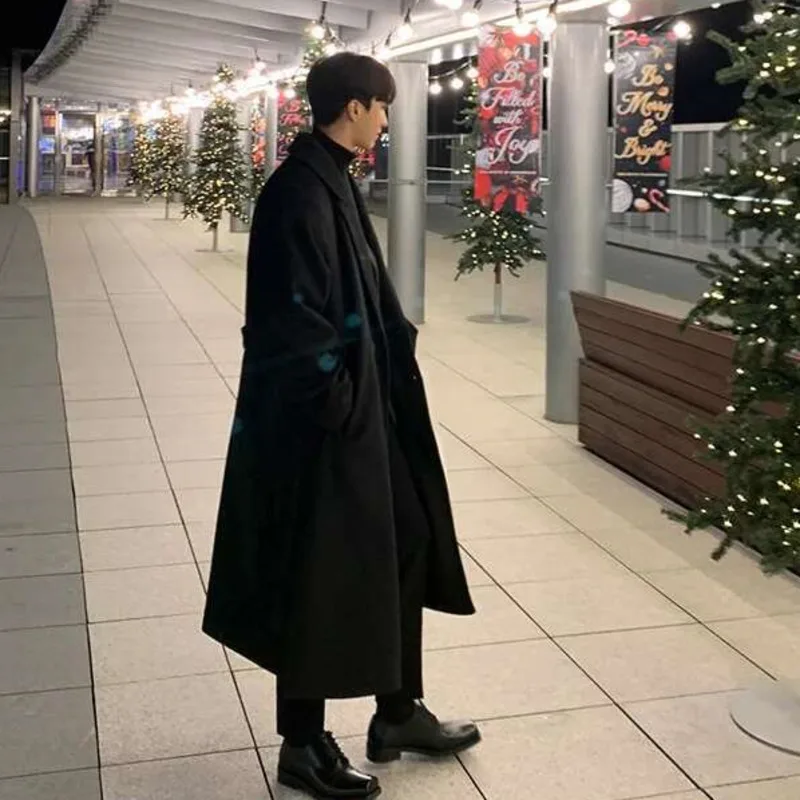
Our long overcoat collection features proportions specifically designed to flatter taller frames, with elegant lengths that balance your height while maintaining sophisticated style.
Statement-Making Coat Styles for Taller Men
Taller men have the unique ability to carry dramatic coat styles that might overwhelm shorter frames. This height advantage opens up exciting style possibilities:
- Duster coats: These dramatic, below-knee styles create a powerful silhouette that complements height.
- Belted overcoats: Long, belted styles define the waist while maintaining elegant length.
- Statement collars and lapels: Your frame can support more substantial design details without looking disproportionate.
- Dramatic draping: Coats with flowing lines and less structured silhouettes can create artistic, fashion-forward looks.
While taller men can confidently wear longer styles, don’t feel limited to them exclusively. Shorter coat lengths can also work well for specific occasions or style goals—particularly for casual settings or when you want to highlight your legs.
The key is balance: a coat that’s too short might appear ill-fitting rather than intentionally styled, while excessively long styles might create an overly dramatic effect for everyday wear. Understanding what length coat makes you taller can help you make strategic choices based on your style goals.
Beyond Height: How Body Type Affects Coat Length Selection
While height provides a foundation for coat length selection, your overall body type significantly influences what proportions will look most flattering. Consider these guidelines based on different builds:
Athletic/Rectangle Build
- Most coat lengths work well due to proportional balance
- Focus on proper shoulder fit as your primary concern
- Mid-thigh to knee-length creates classic, versatile silhouettes
- Hip-length works well for casual styles
Broader Shoulders/V-Shape
- Length should balance the prominent upper body
- Mid-thigh to knee-length typically creates the most harmonious proportion
- Avoid very short styles that may emphasize shoulder width
- Consider tailored waists to maintain the natural V-silhouette
Larger Midsection
- Avoid coat lengths that end directly at the widest part of your midsection
- Slightly longer styles (mid-thigh to knee) often create more flattering lines
- Single-breasted closures typically offer cleaner lines than double-breasted
- Consider slight A-line shapes rather than closely tapered styles
Fabric weight also plays an important role—heavier materials add visual bulk, while lighter-weight options drape more smoothly against the body. Finding the perfect coat length for every body type requires considering both vertical (height) and horizontal (build) dimensions.
| Body Type | Shorter Men | Average Height | Taller Men |
|---|---|---|---|
| Athletic/Rectangle | Hip to mid-thigh | Mid-thigh to knee | Knee to below-knee |
| V-Shape | Hip to mid-thigh | Mid-thigh to knee | Knee-length |
| Larger Midsection | Mid-thigh | Mid-thigh to knee | Knee to below-knee |
How Different Coat Styles Affect Length Considerations
Each coat style comes with traditional length expectations that should be considered alongside your height and body type:
Overcoats and Topcoats
Traditional overcoats typically extend to the knee or just below. Modern variations may be slightly shorter, often ending mid-thigh to just above the knee. Taller men can confidently wear traditional lengths, while shorter men might opt for styles that end just above the knee.
Peacoats
The classic peacoat has a shorter hip-length cut (around 30 inches or 76 cm). This works well for most heights but can be particularly flattering for shorter men. Taller men might look for slightly longer peacoat variations that extend to mid-thigh.
Trench Coats
Traditional trench coats fall to the knee or slightly below. Shorter men often benefit from versions that hit just above the knee, while average to tall men can embrace full-length classic proportions.
Car Coats and Field Jackets
These practical styles typically hit at the hip or mid-thigh, making them versatile options for most heights. Their practical length works particularly well for casual everyday wear.
Puffer Jackets and Parkas
Functional winter coats often come in mid-thigh lengths for optimal protection. Shorter men might opt for hip-length puffers, while taller men can confidently wear longer insulated styles.
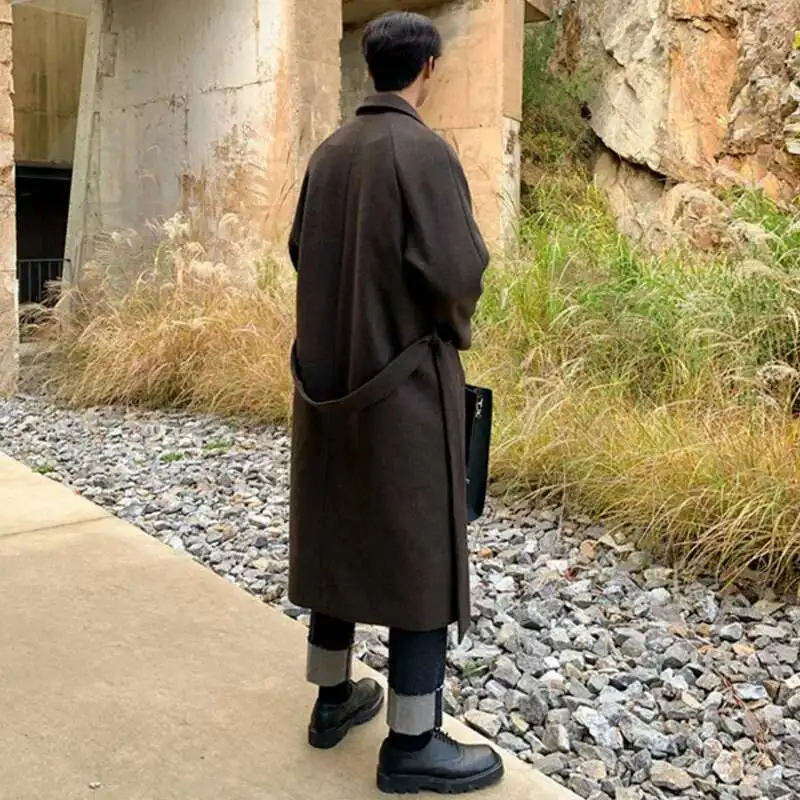
Understanding the proper fit of specific styles, like the expert guide to double-breasted coat fit, helps you adapt traditional proportions to your particular frame.
The Perfect Fit: Beyond Length to Complete the Look
While length creates the foundation of a well-fitting coat, several other elements work together to create a truly flattering silhouette:
- Shoulder fit: The seam should align with your natural shoulder edge—too narrow restricts movement, too wide creates a sloppy appearance
- Sleeve length: Ideally ends at your wrist bone, showing 1/4 to 1/2 inch (0.6-1.3 cm) of shirt cuff when arms are at your sides
- Chest and waist: Should allow for comfortable layering without excess fabric bunching
- Closure placement: Higher button stances can visually shorten a coat, while lower placements can elongate it
- Back vent(s): Should lay flat when standing straight, opening only when moving
- Overall mobility: You should be able to comfortably raise your arms and cross them in front of your chest
Coat Fit Checklist:
- Shoulder seams align with natural shoulder edge
- Sleeves end at wrist bone with room for shirt cuff to show
- Can comfortably button the coat without pulling
- No excess fabric bunching at waist, back, or chest
- Back vent(s) lay flat when standing still
- Can move arms freely without significant restriction
Understanding proper layering techniques for different coat lengths, especially for winter layering with long overcoats, ensures your coat remains functional while maintaining its clean lines.
Seasonal Considerations for Coat Length
The changing seasons often call for adjustments in coat length to balance style with practical protection:
Winter
- Longer lengths (knee and below) offer superior weather protection
- Extended coverage protects legs from cold, wind, and precipitation
- Allow extra room for heavier layering underneath
- Consider how length interacts with winter footwear (boots versus shoes)
Fall/Spring
- Mid-thigh lengths offer versatile transitional season protection
- Lighter-weight fabrics prevent overheating while still providing coverage
- Car coat and trench lengths provide practical protection without winter’s bulk
Climate-Specific Considerations
- Rainy regions benefit from longer waterproof styles with adequate coverage
- Extreme cold climates call for maximum length for protection
- Milder climates may prioritize style flexibility over maximum coverage
Understanding the perfect winter coat length for your specific climate and lifestyle ensures your outerwear performs as good as it looks.
Mens Cashmere Overcoat, Mens Hooded Winter Coat, Mens Wool Blend Coat
Price range: $128.72 through $139.68 Select options This product has multiple variants. The options may be chosen on the product pageMens Black Overcoat, Mens Black Wool Coat, Mens Wool Overcoat
$339.18 Select options This product has multiple variants. The options may be chosen on the product pageMens Grey Overcoat, Mens Wool Blend Coat, Mens Wool Overcoat
$201.28 Select options This product has multiple variants. The options may be chosen on the product pageMens Herringbone Coat, Mens Long Overcoat, Mens Wool Overcoat
Price range: $197.16 through $203.69 Select options This product has multiple variants. The options may be chosen on the product pageMens Long Overcoat, Mens Topcoats
Price range: $189.40 through $196.88 Select options This product has multiple variants. The options may be chosen on the product pageMens Long Overcoat, Mens Tweed Coat
Price range: $397.49 through $409.96 Select options This product has multiple variants. The options may be chosen on the product page
Expert Shopping Tips for Finding Your Perfect Coat Length
Apply these practical strategies to ensure you select the ideal coat length during your next purchase:
Wear typical clothing when trying on coats. If you’ll wear suits underneath, bring a suit jacket. For casual coats, wear your typical layering pieces.
Move around in the fitting room. Sit down, reach forward, cross your arms. A coat may look good standing still but restrict movement in real life.
Check your silhouette from all angles. The side view often reveals proportion issues not visible from the front. Use multiple mirrors or take photos.
Consider minor alterations. While major length changes are difficult, minor sleeve or hem adjustments can perfect the fit of an otherwise ideal coat.
Evaluate the overall proportion. Step back and assess how the coat length works with your entire outfit, not just in isolation.
When shopping our overcoat collection, use these tips to identify styles that will both flatter your frame and serve your practical needs.
Common Questions About Coat Length
Should a coat be longer than a suit jacket?
Yes, typically your overcoat should be 1-2 inches (2.5-5 cm) longer than your suit jacket. This ensures proper coverage of your suit while maintaining clean lines.
Can the same coat work for both casual and formal occasions?
Mid-thigh to knee-length coats in neutral colors offer the most versatility. The formality level can often be adjusted through styling choices and what you wear underneath.
How has coat length changed in men’s fashion over time?
Coat lengths have fluctuated throughout fashion history, from the dramatic full-length styles of the Victorian era to the shorter cuts of the mid-20th century. Today’s market offers diverse options, with knee-length and mid-thigh styles being particularly enduring.
Can tall men wear shorter coats?
Absolutely. While tall men can embrace longer styles, shorter coats can work well in casual settings. The key is ensuring the shorter length appears intentional rather than simply too small.
What length is best for driving or commuting?
Shorter to mid-thigh lengths typically offer the best mobility for driving and active commuting. Full-length styles can bunch uncomfortably when seated for extended periods.
How to Style Different Coat Lengths for Maximum Impact
Each coat length creates different styling opportunities to enhance your overall look:
Styling Shorter Coats (Hip to Mid-Thigh)
- Layer with longer sweaters or cardigans for interesting hemline interplay
- Works well with both slim and straight-leg pants
- Perfect for showcasing statement boots or footwear
- Ideal for more casual, dynamic settings
Styling Mid-Length Coats (Mid-Thigh to Knee)
- The most versatile length for balancing formality and casualness
- Pairs equally well with suits or jeans
- Creates clean lines when worn open or closed
- Offers the most flexibility across different settings
Styling Longer Coats (Knee and Below)
- Creates dramatic, sophisticated silhouettes
- Pairs particularly well with tailored trousers and suits
- Consider the coat the centerpiece of your outfit
- Works best with streamlined layers underneath to avoid bulk
Proper accessorizing enhances your coat’s appearance regardless of length. Scarves add visual interest and warmth, while gloves and appropriate headwear complete the look. Footwear should balance your coat’s proportion—chunkier boots often pair well with longer coats, while sleeker shoes complement shorter styles.
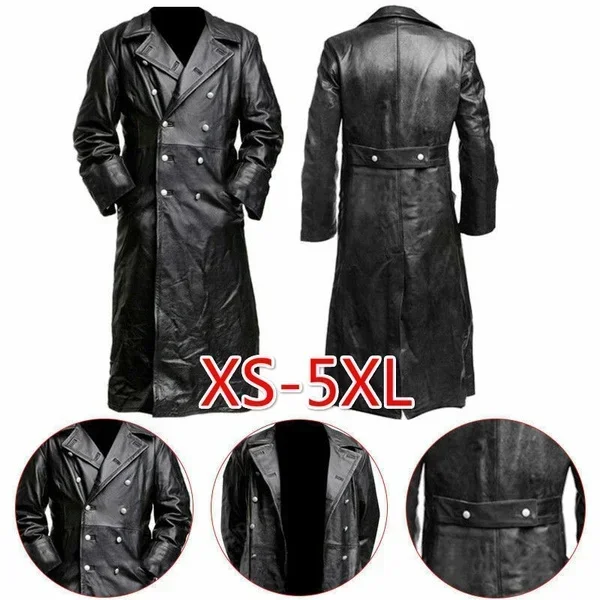
For more detailed guidance on styling various coat lengths, our men’s coat length style guide offers inspiration for creating cohesive, polished outfits around your chosen coat.
By understanding how coat length interacts with your height, body type, and style preferences, you can select outerwear that not only keeps you warm but enhances your overall appearance. The perfect coat length is one that makes you feel confident while creating visual harmony with your natural proportions.

